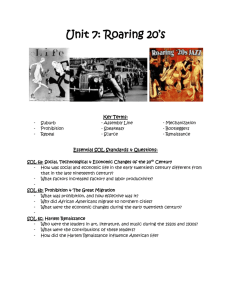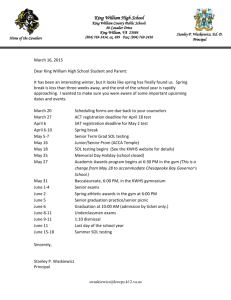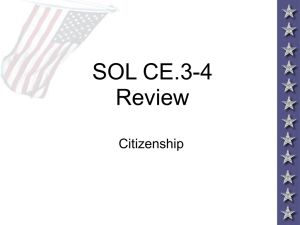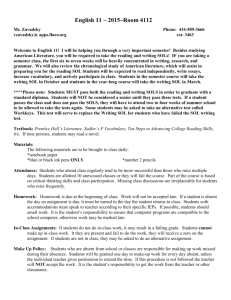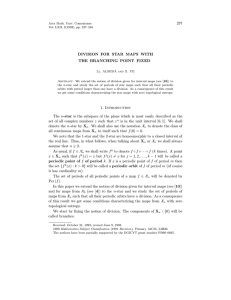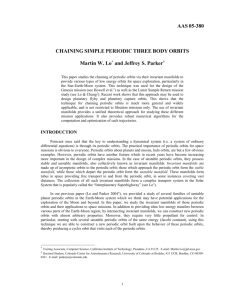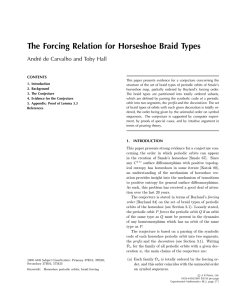from the textbook.1 Sol'n. See the end of file. Problem 2. 2.1(1
advertisement
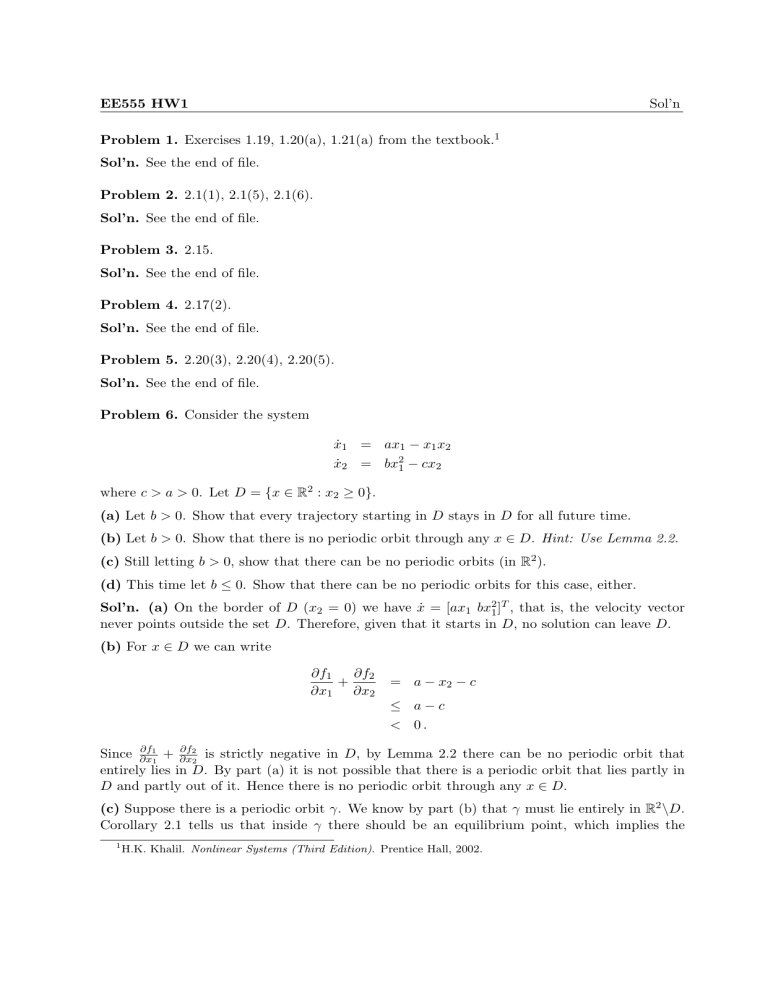
EE555 HW1
Sol’n
Problem 1. Exercises 1.19, 1.20(a), 1.21(a) from the textbook.1
Sol’n. See the end of file.
Problem 2. 2.1(1), 2.1(5), 2.1(6).
Sol’n. See the end of file.
Problem 3. 2.15.
Sol’n. See the end of file.
Problem 4. 2.17(2).
Sol’n. See the end of file.
Problem 5. 2.20(3), 2.20(4), 2.20(5).
Sol’n. See the end of file.
Problem 6. Consider the system
ẋ1 = ax1 − x1 x2
ẋ2 = bx21 − cx2
where c > a > 0. Let D = {x ∈ R2 : x2 ≥ 0}.
(a) Let b > 0. Show that every trajectory starting in D stays in D for all future time.
(b) Let b > 0. Show that there is no periodic orbit through any x ∈ D. Hint: Use Lemma 2.2.
(c) Still letting b > 0, show that there can be no periodic orbits (in R2 ).
(d) This time let b ≤ 0. Show that there can be no periodic orbits for this case, either.
Sol’n. (a) On the border of D (x2 = 0) we have ẋ = [ax1 bx21 ]T , that is, the velocity vector
never points outside the set D. Therefore, given that it starts in D, no solution can leave D.
(b) For x ∈ D we can write
∂f1
∂f2
+
∂x1 ∂x2
= a − x2 − c
≤ a−c
< 0.
∂f1
∂f2
Since ∂x
+ ∂x
is strictly negative in D, by Lemma 2.2 there can be no periodic orbit that
1
2
entirely lies in D. By part (a) it is not possible that there is a periodic orbit that lies partly in
D and partly out of it. Hence there is no periodic orbit through any x ∈ D.
(c) Suppose there is a periodic orbit γ. We know by part (b) that γ must lie entirely in R2 \D.
Corollary 2.1 tells us that inside γ there should be an equilibrium point, which implies the
1
H.K. Khalil. Nonlinear Systems (Third Edition). Prentice Hall, 2002.
√
2
existence
√ of an equilibrium point in R \D. The system has three equilibria: (0, 0), ( ac/b, a),
and (− ac/b, a); all of which are in D. Hence γ cannot exist.
(d) For b ≤ 0 the origin is the only equilibrium point. The linearization at the origin yields the
following A matrix
[
]
a
0
A=
0 −c
whose eigenvalues are at λ1 = a > 0 and λ2 = −c < 0. Therefore the origin is a saddle. As a
result, by Corollary 2.1, the existence of a periodic orbit is ruled out.
Problem 7. 2.24.
Sol’n. See the end of file.


